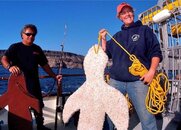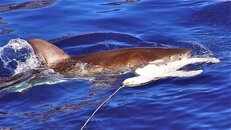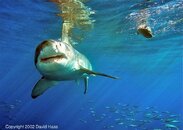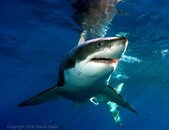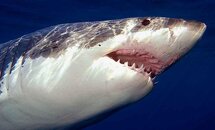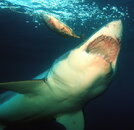Saw 15 different GWS at Guadalupe on a scientific expedition back in 2005. Back then Jean-Michel's son Fabien Cousteau was filming his special on them for CBS and they did some dives out-of-the-cage. When JMC was in South Africa (late 90's?), he free dove with Andre Hartmann and the great whites uncaged and even hitched a ride on one. I was amazed when he told me about the experience.
We know there are GWS out here in Catalina waters, and I'm sure they've been watching me at several dive locations (and decided I wasn't worth the effort). One of our local videographers tried to film the GWS at Sea Fan Grotto/Empire Landing Quarry but it retreated when he advanced with his camera.
We've not had a verified attack on a diver in many years, but kayakers and paddleboarders have had their modes of conveyance chewed up on occasion.
We know there are GWS out here in Catalina waters, and I'm sure they've been watching me at several dive locations (and decided I wasn't worth the effort). One of our local videographers tried to film the GWS at Sea Fan Grotto/Empire Landing Quarry but it retreated when he advanced with his camera.
We've not had a verified attack on a diver in many years, but kayakers and paddleboarders have had their modes of conveyance chewed up on occasion.




